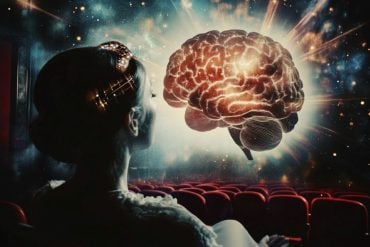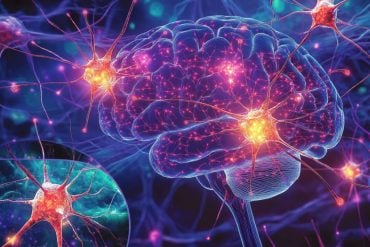The downregulation of spinal astrocyte connexin43 (Cx43) expression causes sustained neuropathic pain following peripheral nerve injury. The inflammatory cytokine tumor necrosis factor (TNF) mediates the downregulation of Cx43 expression, which leads to decreased expression of the glutamate transporter GLT-1 and enhanced glutamatergic neurotransmission. Targeting the recovery of Cx43 function using pharmacological approaches or gene therapy might serve as novel therapeutic strategies ameliorate neurological disorders in general and neuropathic pain in particular.
Spinal cord astrocytes are critical in the maintenance of neuropathic pain. Cx43 expressed on spinal dorsal horn astrocytes modulates synaptic neurotransmission, but its role in nociceptive transduction has yet to be fully elaborated.
Several types of Cx have been identified in the spinal cord. Cx43 is preferentially and mainly expressed in astrocytes, and altered astrocytic Cx43 expression is associated with various neurological disorders such as the neuroinflammation observed in multiple sclerosis. However, the relationship between astrocytic Cx43 expression level and changes in pain perception is controversial.
A research group from Hiroshima University investigated the effects of altered spinal astrocytic Cx43 expression and pain-related behavior following peripheral nerve injury. They found that in the spinal cord, an inflammatory event following nerve injury resulted in the release of cytokines such as TNF and induced the downregulation of astrocytic Cx43 and GLT-1 expression, resulting in increased excitatory synaptic activity.

“When downregulated Cx43 expression is restored by adenovirus vector expressing Cx43 in mouse model, reversed mechanical hypersensitivity was observed,” stated Dr. Norimitsu Morioka. “In addition, downregulated GLT-1 was reversed by restoration of Cx43 by adenovirus vector expressing Cx43. It is possible that Cx43 directly regulates GLT-1 expression and function”.
The precise molecular mechanisms involving Cx43-mediated GLT-1 downregulation require further investigation. These results indicate the importance of spinal astrocyte Cx43 are essential for maintenance of neuropathic pain following peripheral nerve injury and suggested modulation of Cx43 as a novel target for developing analgesics for neuropathic pain.
Funding: The research was funded by Grant-in-Aid for Scientific Research of the Japan Society for the Promotion of Science.
Source: Norifumi Miyokawa – Hiroshima University
Image Credit: Image credited to Hiroshima University
Original Research: Abstract for “Tumor necrosis factor-mediated downregulation of spinal astrocytic connexin43 leads to increased glutamatergic neurotransmission and neuropathic pain in mice” by Norimitsu Morioka, Fang Fang Zhang, Yoki Nakamura, Tomoya Kitamura, Kazue Hisaoka-Nakashima, and Yoshihiro Nakata in Brain, Behavior and Immunity. Published online June 24 2015 doi:10.1016/j.bbi.2015.06.015
Abstract
Tumor necrosis factor-mediated downregulation of spinal astrocytic connexin43 leads to increased glutamatergic neurotransmission and neuropathic pain in mice
Spinal cord astrocytes are critical in the maintenance of neuropathic pain. Connexin 43 (Cx43) expressed on spinal dorsal horn astrocytes modulates synaptic neurotransmission, but its role in nociceptive transduction has yet to be fully elaborated. In mice, Cx43 is mainly expressed in astrocytes, not neurons or microglia, in the spinal dorsal horn. Hind paw mechanical hypersensitivity was observed beginning 3 days after partial sciatic nerve ligation (PSNL), but a persistent downregulation of astrocytic Cx43 in ipsilateral lumbar spinal dorsal horn was not observed until 7 days post-PSNL, suggesting that Cx43 downregulation mediates the maintenance and not the initiation of nerve injury-induced hypersensitivity. Downregulation of Cx43 expression by intrathecal treatment with Cx43 siRNA also induced mechanical hypersensitivity. Conversely, restoring Cx43 by an adenovirus vector expressing Cx43 (Ad-Cx43) ameliorated PSNL-induced mechanical hypersensitivity. The sensitized state following PSNL is likely maintained by dysfunctional glutamatergic neurotransmission, as Cx43 siRNA-induced mechanical hypersensitivity was attenuated with intrathecal treatment of glutamate receptor antagonists MK801 and CNQX, but not neurokinin-1 receptor antagonist CP96345 or the Ca2+ channel subunit α2δ1 blocker gabapentin. The source of this dysfunctional glutamatergic neurotransmission is likely decreased clearance of glutamate from the synapse rather than increased glutamate release into the synapse. Astrocytic expression of glutamate transporter GLT-1, but not GLAST, and activity of glutamate transport were markedly decreased in mice intrathecally injected with Cx43-targeting siRNA but not non-targeting siRNA. Glutamate release from spinal synaptosomes prepared from mice treated with either Cx43-targeting siRNA or non-targeting siRNA was unchanged. Intrathecal injection of Ad-Cx43 in PSNL mice restored astrocytic GLT-1 expression. The cytokine tumor necrosis factor (TNF) has been implicated in the induction of central sensitization, particularly through its actions on astrocytes, in the spinal cord following peripheral injury. Intrathecal injection of TNF in naïve mice induced the downregulation of both Cx43 and GLT-1 in spinal dorsal horn, as well as hind paw mechanical hypersensitivity, as observed in PSNL mice. Conversely, intrathecal treatment of PSNL mice with the TNF inhibitor etanercept prevented not only mechanical hypersensitivity but also the downregulation of Cx43 and GLT-1 expression in astrocytes. The current findings indicate that spinal astrocytic Cx43 are essential for the maintenance of neuropathic pain following peripheral nerve injury and suggest modulation of Cx43 as a novel target for developing analgesics for neuropathic pain.
“Tumor necrosis factor-mediated downregulation of spinal astrocytic connexin43 leads to increased glutamatergic neurotransmission and neuropathic pain in mice” by Norimitsu Morioka, Fang Fang Zhang, Yoki Nakamura, Tomoya Kitamura, Kazue Hisaoka-Nakashima, and Yoshihiro Nakata in Brain, Behavior and Immunity. Published online June 24 2015 doi:10.1016/j.bbi.2015.06.015






